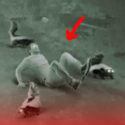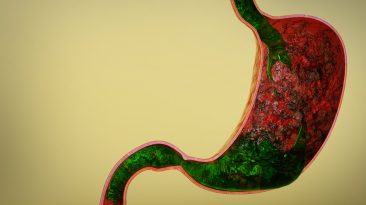Ticks. They drink your blood and infect you with disease. But they’re about to get much worse. They’re growing into huge monstrosities. And they’re coming for you. How would ticks behave if they were human-sized? How much of your blood would they need for each meal? And why should you just let them eat you?
Ticks are bloodsuckers, just like mosquitoes. But they aren’t insects. They’re arachnids. And these pesky, little critters can’t jump or fly. Instead, they quest. They park on blades of grass and wait for you to walk by. When the opportunity strikes, they latch on and crawl around your skin, looking for a perfect spot to extract blood.
Once their grappling hook claws and harpoon-like mouth are in you, it’s dinnertime. And this is where ticks get dangerous. Ticks carry more diseases than any other type of arthropod. If they’ve had a meal from an infected animal, they could become vectors for diseases such as Lyme disease, Powassan virus and Rocky Mountain spotted fever.
So if a tick was as big as you, could it become the most dangerous predator?
Ticks are tricky to watch out for because of their size. The average dog tick is only about 4.75 mm (0.19 in) with an empty stomach. Even when full, female ticks only expand to a size of 12.7 mm (0.5 in). But get ready to meet your worst nightmare. If we scaled these critters up to human size, they’d be 144 times bigger. Once barely visible, now you’d see ticks as big as 180 cm (6 ft) in the wild.
They’d hide in tall grass and leaves, waiting for you. And hopefully, you find them before they find you. But they wouldn’t be able to see you. Ticks don’t have eyes. Instead, they’d use their Haller’s organs. These are sensors on their front legs that allow them to detect heat radiating off warm-blooded animals.
If you got close enough, they’d run at you with their massive claws. And if they latched onto you, it wouldn’t be the same experience as usual. It would be like being stabbed with giant hooks made of serrated knives. These would cause devastating injuries. If you tried to remove them, you’d start to bleed out. Usually, small ticks take hours to find the perfect spot to dig in for a meal.
But with all the fresh blood pouring out of your wounds, they’d sit down for dinner right away. They’d stick their hypostome right into your bloody wound. That’s the barbed, harpoon-shaped part of their body near their head. And this is what they use to anchor themselves to you. Trying to remove an average-sized tick is tough enough. But at this new monstrous size, trying to remove it would pretty much rip your insides to shreds.
You’d have to choose between two terrible options. Remove the tick and see if you survive. Or try to relax and let the creature get its meal. Surprisingly, this could be your best shot at survival. Though these beasts are ravenous for your blood, they wouldn’t drink all that much. Depending on the type of tick, they’d drink 0.50 to 1.5 ml (0.02 to 0.05 oz) per meal.
Scaled up 144 times, they’d only drink 72 to 216 ml (2.4 to 7.3 oz.). That’s a small snack for such a big creature. So maybe you can relax knowing they wouldn’t drink you dry. But that wouldn’t mean things aren’t going to get even scarier. The tick would now swell to an even larger size. A female tick would be storing your blood for its eggs.
If you managed to roll the heavy tick off your body, now would be the time for some serious first aid. Or better yet, a trip to a hospital. There would be over 3,500 different proteins from their saliva in your body that were designed to give them the best feeding experience. These anticoagulants make sure your blood flows nicely.
One such protein creates a lake of blood for the tick to feed off. Another suppresses your body’s immune response to prevent clotting or scarring. If you were lucky, you would get a lot of the enzyme that reduces your pain signals. The good news with all of this is these ticks wouldn’t be the best hunters. And they’d pose less of a risk in terms of infecting you with diseases.
They are small and stealthy because that’s evolutionarily favorable for them. And why devour you for one small snack when they can bring their family and feed off of you together. Can you imagine being bitten by one million ticks?
Sources
- “15 Important Facts You Must Know About Ticks”. Maria Masters. 2018. health.com.
- “How Ticks Work”. Tracy V. Wilson. 2007. animals.howstuffworks.com.
- “6 Ways Ticks Can Make You Sick Or Kill You, From Lyme Disease To The Powassan Virus”. 2021. insider.com.
- “The Life Story Of A Tick”. Constance Casey. 2008. slate.com.
- “Quantity Of Blood Ingested By Four Species Of Hard Ticks (Acari: Ixodidae) Fed On Domestic Dogs”. Koch, Henry G. and John R. Sauer. 1984. Annals Of The Entomological Society Of America 77 (2): 142-146. doi:10.1093/aesa/77.2.142.



























